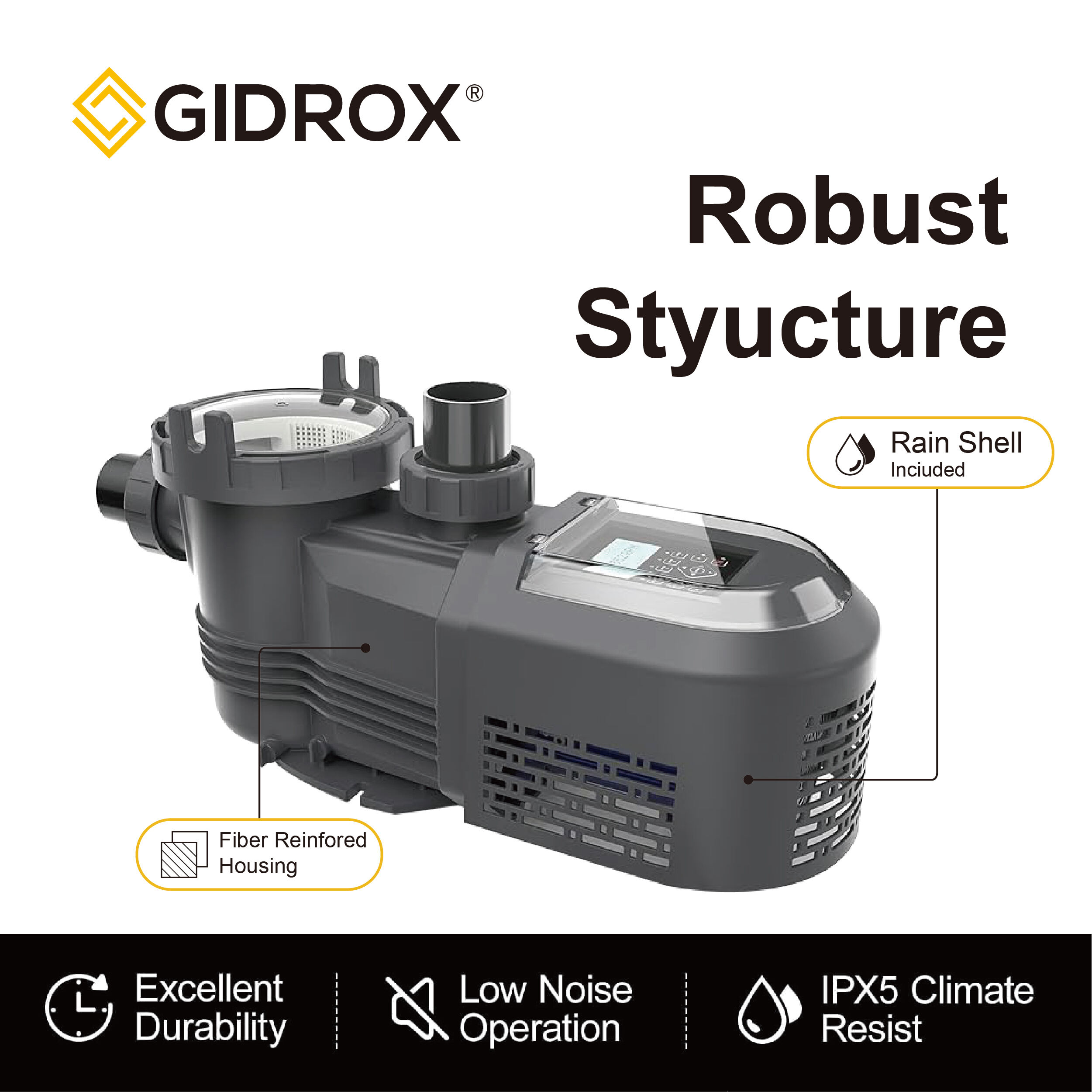The familiar low-hum of the single-speed pool pump was the industry standard during the past decades. Commercial pool managers knew what it does: move water and filter and assist in distribution of chemicals. However, behind this reliability is a fundamental lack of effectiveness and operating expenses that are becoming unacceptable within the context of the toughened modern business arena. This is the era of transformation marked by variable-speed technology- a revolution that brings with it greater performance and value unheard of before now.
The Single-Speed Era: Limitations Recognized
Whereas traditional single-speed pumps have one fixed high RPM (revolutions per minute). Although efficient in basic circulation, this continual-no-soft-switching strategy is highly disadvantaged in terms of commercial use:
1.Excessive Energy Consumption: Working continuously at maximum load guzzles huge quantities of electricity that often comprise 20-50 percent of a commercial facility energy bill.
2.Limited Flexibility: They provide nothing in the way of the flexibility to adjust the flow rate to the true changing demands of the pool system day to day or season to season.
3.Higher Operating Costs: The inefficient utilization of energy has direct correlations to the high recurrent operational costs.
4.Increased Wear & Tear: Continuous high-velocity treatment subjects the pump and related assembly to more mechanical strain, which may cut down on service life.
5.Noise Pollution: This creates much noise which becomes a nuisance in business environments such as hotels, resorts, or health clubs due to high RPM.
The Variable-Speed Revolution: Engineering Superior Performance
Variable-speed technology is a basic engineering breakthrough. Applying high-tech permanent magnet motors and innovative digital controls, such pumps can adjust their motor rotational speed (RPM) to provide exactly the amount of flow needed to accomplish the task. It is a change that opens up a new level of performance:
1.Dramatic Energy Savings (70-90%): This is the benefit that stands on its own. Energy usage falls through the floor by using very low speeds when performing a routine filtration (particularly low flow rates compared to priming or vacuuming). Commercial investors regularly note that their energy-bill savings are massive and quick ROI is realized.
2.Optimized Hydraulic Performance: Close-matching flow to system demand delivers maximum filtration, chemical distribution and water turnover with none of the wasted flow of single-speed pumps. The result of that is cleaner, healthier water on a regular basis.
3.Extended Equipment Lifespan: Running at lower, softer speeds, reducing tremendously the amount of mechanical load on pump motor, seals and bearings. This can be translated to longer service life and maintenance cost.
4.Quiet Operation: The slower speeds result in a substantial lower noise level that is pleasanter to both the guests and the staff.
5.Enhanced Control & Integration: Digital controls provide accurate programming of various speeds and availability (e.g. high speed, which may be required to clean the cycles, slows down when they undergo filtration during the night.) Quite a number of models can easily be part of larger pool automation systems with central control.
6.Future-Proofing & Sustainability: Complying with more and more harsh energy efficiency laws around the globe is a breeze. The resultant energy decrease is more than dramatic, which considerably reduces the carbon footprint of the facility, which is in line with corporate sustainability objectives.
The Performance Imperative for Commercial Operations
In commercial pools, where pumping a large volume of water, at high rates of use and within demanding health and safety standards, variable-speed pumps cannot just help, they are essential to maximize performance. The transition provides:
● Tangible Bottom-Line Impact: Cut energy expenditure translates to direct increase in profits.
● Reduced Total Cost of Ownership (TCO): Lower energy cost and longer equipment life and maintenance, will result in lower TCO than that associated with single-speed pumps.
● Operational Excellence: Continuous water quality, low levels of noise, and predictable automated operation contribute to the visitor experience with the facility and also makes it easier to operate the facility.
● Compliance & Sustainability Leadership: Adhere to regulations without effort or inconvenience and perform as a responsible citizen of the environment.
Embracing the New Standard
Single-speed technology gave way to variable-speed technology providing a real new dimension towards commercial pool pump performance. It is more than mere an equipment upgrade; it is an efficiency, reliability, cost management, and operational excellence strategic investment. Superior engineering and proven performance enhancements have made variable-speed technology, clearly and indispensably, the standard of modern, forward-thinking commercial pool operations. Variable speed is the future of high-performance, efficient pool management.

 EN
EN










































 ONLINE
ONLINE